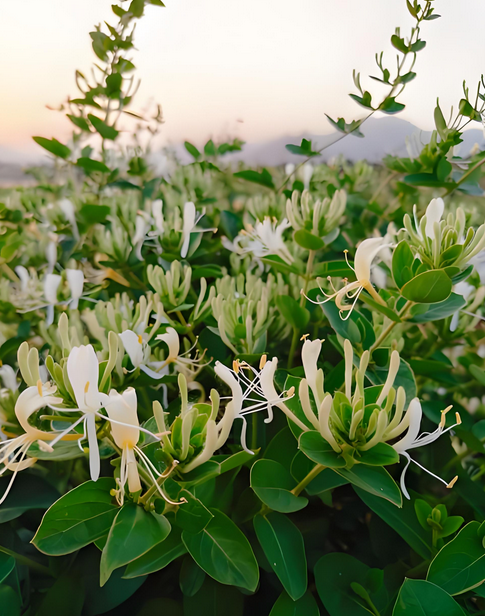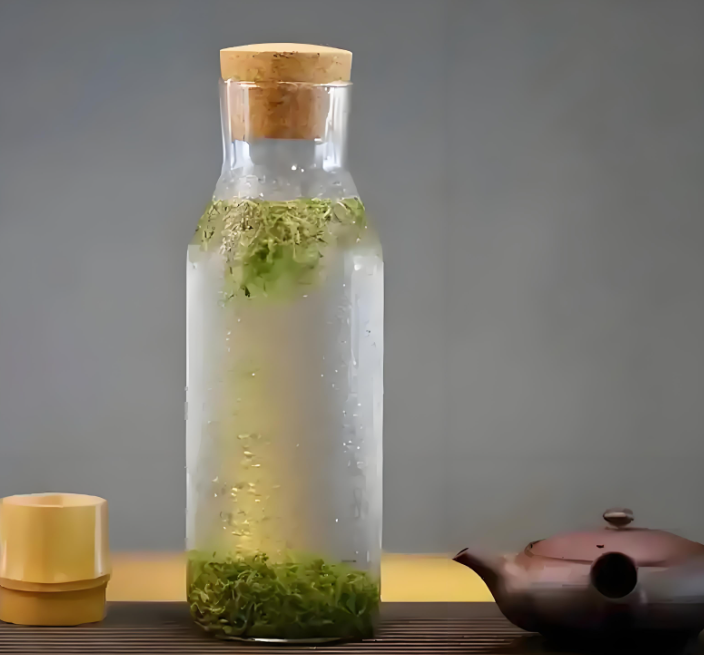Chinese Herbal Tea: A Journey Through Millennia of Wisdom and Innovation
I. Millennial Wisdom: The Origins and Evolution of Chinese Herbal Tea
1. Eastern Jin Dynasty: Ge Hong and the Birth of Lingnan Herbal Tea (317–420 CE)
In the humid, disease-prone Lingnan region, Eastern Jin pharmacologist Ge Hong pioneered herbal tea during his seclusion on Mount Luofu. His Emergency Formulas to Keep Close at Hand documented early prototypes like “Laojun Shenming Bai San” and “Bi Tianxing Yili Fang,” blending honeysuckle and chrysanthemum into daily brews. Ge advocated “food as medicine,” laying the foundation for preventive healthcare.
By the Tang Dynasty, monks at Guangxiao Temple innovated with licorice and Terminalia chebula water, creating “Hezi Decoction,” the first monastic herbal tea for heat relief. The Song Dynasty elevated herbal tea to a public health strategy through state-endorsed Yangqi Decoction.
2. Ming-Qing Golden Age: From Street Stalls to National Heritage (1368–1912)
Guangzhou’s Thirteen Hong merchants commercialized herbal tea in the Qing era. In 1828, Wang Zebang founded Wang Lao Ji, curing imperial commissioner Lin Zexu’s heatstroke with a 24-herb formula. By 1900, over 1,000 tea houses dotted Guangzhou, iconic gourd signs advertising classics like Bansha Tea and Five-Flower Tea.

Key transformations occurred:
- Functional diversification: Mulberry-chrysanthemum blends for liver health, sugarcane-root teas for lung moisture.
- Standardization: Seven-step processing (cutting, soaking, charcoal roasting) codified in Compendium of Materia Medica
- Cultural symbolism: Ranked among Lingnan’s “Three Treasures” with Cantonese opera and dim sum.
In 2006, 54 formulas including Wang Lao Ji and Huang Zhen Long earned UNESCO Intangible Cultural Heritage status, cementing pure Chinese herbal tea’s global recognition.
II. The Herbal Tea Pantheon: 5 Classic Formulations
- Honeysuckle & Chrysanthemum Blend
- Origin: Compendium of Materia Medica anti-inflammatory formula
- Science: Honeysuckle’s chlorogenic acid (92% antibacterial rate); chrysanthemum flavonoids (60% aspirin-equivalent anti-inflammatory).
- Mulberry & Dandelion Fusion
- History: Ming Dynasty liver-cleansing recipe
- Innovation: Instant powder for urban lifestyles; dandelion terpenoids reduce liver enzymes.

3.Bamboo Leaf & Mint Elixir
- Method: Cold-steeped 4hr for 300% menthol retention.
- Benefits: Bamboo chlorophyll modulates gut microbiota.
4.Plum & Hawthorn Tonic
- Royal roots: Tang Dynasty beauty elixir.
- Modern twist: Added citrus peel boosts fat metabolism.
5.24-Herb Detox Brew
- Power: Isatis root (indirubin inhibits flu virus); poria cocos triterpenes enhance probiotics.
III. Scientific Validation: Nature’s Pharmacy Unveiled
- Antimicrobial Action
- Honeysuckle blocks TLR4/NF-κB pathway (matches low-dose ibuprofen).
- Andrographolide in Bansha Tea neutralizes influenza A.
- Metabolic Regulation
- Lycium barbarum polysaccharides improve insulin sensitivity (12% glucose drop in 6 weeks).
- Lotus leaf alkaloids activate AMPK pathway (30% body fat reduction).
- Gut-Brain Axis
- Poria acid boosts bifidobacteria (IBS relief).
- Prunella vulgaris polysaccharides repair intestinal mucosa.
- Cardiovascular Protection
- Chrysanthemum flavonoids prevent LDL oxidation.
- Licorice chalcones inhibit ACE (8-10mmHg BP reduction).
- Oncological Potential
- Dandelion root extract (84.76% gastric cancer suppression).
- Mulberry leaf polyphenols induce liver cancer apoptosis
IV.The Art of Brewing: From Gongfu Tea to Cold Brew Innovation
1. Traditional Gongfu Tea: The Aesthetic Essence of Eastern Tea Culture
As the core brewing method for Wulong Oolong Tea, Gongfu tea embodies the principles of precision, elegance, and slowness, showcasing the layered complexity and mineral “rock rhyme” (yan yun) of the tea. Regional variations highlight unique traditions:
(1) Chaozhou Gongfu Tea: A Seven-Step Ritual
- The Four Treasures of Tea Tools:
- Yushu Wei (clay kettle for boiling water)
- Mengchen Jar (Yixing clay teapot)
- Ruochen Cup (delicate tasting cups)
- Chaozhou Stove (charcoal-fired stove)
These tools form the cultural symbols of Chaozhou’s tea ceremony.
- Eight-Step Brewing Process:
① Tea Loading (Na Cha): Lay coarse leaves at the bottom, fine leaves in the middle, and coarse leaves on top to prevent bitterness and ensure even infusion.
② High Pour, Low Serve: Boiling water is poured from a height to release aroma, then gently decanted to preserve fragrance (tea-to-water ratio 1:18-20).
③ **”Guanyin巡城” (Even Distribution): Pour tea evenly into cups, symbolizing fairness6.
④ “Hanxin点兵” (Precision Dripping): Ensure consistency by distributing the last drops equally.
⑤ “Three Dragons Guard the Tripod”**: Hold the cup with thumb, index, and middle fingers—a gesture of respect and grace.
(2) Fujian Rock Tea Brewing: Charcoal Fire Meets Mineral Depth
- Teapot Choice: Use a 120ml Yixing clay teapot for Wuyi Rock Tea, with 100°C water to enhance mineral notes (ratio 1:15).
- Three Boils Awakening:
- First infusion (5 seconds): “Wake” the leaves.
- Second infusion (30 seconds): Extract full-bodied flavor.
- Seven infusions still retain lingering aroma.
- Re-roasting Aged Teas: Charcoal re-roasting revives hidden floral and fruity notes in aged oolongs2.
(3) Taiwanese Gongfu Tea: A Sensory Revolution with Aroma Cups
- Dual-Cup Tasting: Use tall aroma cups to concentrate fragrance and small tasting cups for sipping (ratio 1:20 for lighter brews).
- Hot-Cold Contrast Brewing: Alternate between hot infusions (to release aroma) and cold steeping (to lock in freshness), creating a dynamic flavor journey.
2. Cold Brew Innovation: Modern Reinvention of Tradition
In today’s fast-paced world, cold brewing revitalizes Wulong Oolong Tea by reducing tannin extraction by 40% and boosting sweetness by 30%.

(1) Classic Cold Brew Formula
- Tea Selection: Lightly fermented oolongs like Anxi Tieguanyin or Wenshan Baozhong (ratio 1:150).
- Steps:
① Combine 5g tea leaves with 500ml ice water, refrigerate 6-8 hours.
② Strain and add fresh lemon/mint—twice as sweet as hot brews.
(2) Creative Fusion Experiments
- Floral & Fruity Blends:
- Dongding Oolong + Hibiscus + Lychee Ice Cubes: Summer-ready balance of tart and sweet.
- Charcoal-Roasted Tieguanyin Cold Brew + Gin + Rosemary: Craft an “Oriental Tea-tini”.
(3) Wellness-Oriented Brews
- Fitness Companion: Cold brew oolong + BCAAs for post-workout recovery.
- Office Hack: 4g tea bag + 400ml thermos (steep 5 mins) for silky, latte-like texture.
Traditional vs. Modern: A Comparative Study
- Aroma Retention: Hot brewing releases 90% volatile aromas (e.g., cassia bark notes in rock tea), while cold brewing preserves 60% but amplifies hidden floral sweetness.
- Use Cases:
- Gongfu Tea: Ideal for deep appreciation (e.g., 7-infusion rock tea sessions).
- Cold Brew: Perfect for on-the-go hydration (e.g., bottled cold brew).
From Chaozhou’s charcoal-fired rituals to New York’s Cold Brew Oolong Latte, Wulong Oolong Tea bridges tradition and modernity, inspiring global tea innovation.
V. Pandemic Defense: Herbal Tea in Modern Epidemiology
- COVID-19 Applications
- Viral Neutralization: Sage-perilla-coriander blends inhibit SARS-CoV-2 (University of Essen).
- Lung Recovery: Honeysuckle-fishmint “White Lung Decoction” reduces fibrosis (animal trials).
- Influenza Management
- Honeysuckle tea shortens sore throat duration by 30%.
- Green tea catechins (CateProtect®) block H1N1 replication.
- Broad-Spectrum Potential
- EGCG disrupts herpes/dengue viral envelopes (UGA research).
- Raspberry-ginger blends inhibit viral attachment glycoproteins.
Future Directions: Nano-encapsulated polyphenols for bioavailability; herbal-mRNA vaccine synergies.
This synthesis of 5,000 years of empirical wisdom and cutting-edge science positions Chinese herbal tea as both cultural legacy and modern health sentinel. From Ge Hong’s pestle to CRISPR-era labs, it remains humanity’s dialogue with nature’s pharmacy.



